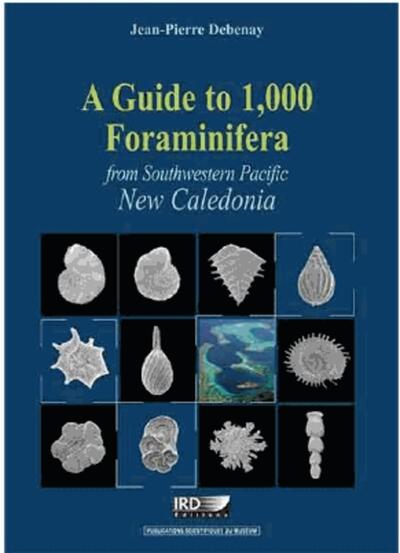- EAN13
- 9782709917292
- Éditeur
- IRD Éditions
- Date de publication
- 14 février 2013
- Collection
- IRD INSTITUT RE
- Nombre de pages
- 378
- Dimensions
- 29,6 x 21 x 2,2 cm
- Poids
- 1158 g
- Langue
- eng
A Guide To 1,000 Foraminifera From Southwestern Pacific - New Caledonia
Jean-Pierre Debenay
IRD Éditions
Prix public : 65,00 €
<p>With about 10,000 species living in salted and brackish waters, foraminifera constitute the most diverse group of shelled microorganisms in modern oceans, and substantially contribute to biodiversity. Abundant and sensitive to environmental conditions, they constitute one of the most valuable tools for environmental assessment and monitoring programs. Preservation of their mineralized test in the sediment allows the reconstruction of past conditions, including Global Change.</p><p>This guide first presents the regional setting and environmental conditions prevailing around New Caledonia. The following sections give an introduction to foraminifera, designed to be accessible to non-specialists, and summarize the main researches that have been carried out on foraminifera from New Caledonia. The main part of the guide describes and illustrates more than 1,000 species of foraminifera collected in a great variety of environments around New Caledonia. For each species, SEM micrographs are associated with a description and notes on its distribution. In order to facilitate identification, even by non-specialists, species are recorded in alphabetical order within groups made on the basis of (1) the nature of the test and (2) the dominant morphological feature. A photographical summary is provided for preliminary identification.</p><p>Jean-Pierre Debenay, Research Director emeritus at IRD (LOCEAN), graduated from the École Normale Supérieure (Saint-Cloud) and earned his PhD at Marseille University. He created laboratories dedicated to the study of bioindicators, mostly foraminifera, at the University of Angers, France (BAFECP, currently BIAF) and on Yeu Island (LEBIM). Much of his research focused on tropical foraminifera from Brazil, French Guiana, New Caledonia and Vietnam.</p>


















